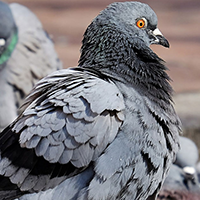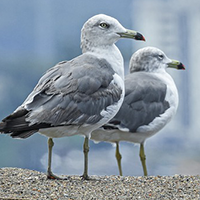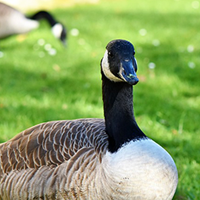 Gulls and other related sea birds exist in great numbers. A subset of long winged swimming birds, these highly intelligent birds will carry mussels and clams high in the air and drop them on hard surfaces to get to the soft meat inside. They are also able to remember and recognize human faces. Gulls have the ability to drink saltwater and freshwater, thanks to a pair of salt removing glands above their nostrils. They are good swimmers and in addition can walk or run agilely on land. Gulls are scavenging birds, meaning they will eat everything from dead fish to garbage, field mice and insects. Gulls enjoy protection at the federal level.
Gulls and other related sea birds exist in great numbers. A subset of long winged swimming birds, these highly intelligent birds will carry mussels and clams high in the air and drop them on hard surfaces to get to the soft meat inside. They are also able to remember and recognize human faces. Gulls have the ability to drink saltwater and freshwater, thanks to a pair of salt removing glands above their nostrils. They are good swimmers and in addition can walk or run agilely on land. Gulls are scavenging birds, meaning they will eat everything from dead fish to garbage, field mice and insects. Gulls enjoy protection at the federal level.
Gull Control
Gulls enjoy numerous Federal and Provincial protections. Hawkeye will obtain permits from local and federal officials for control means. Fortunately, gulls are easy to exclude from areas, so lethal means are rarely needed. Falconry using live birds of prey, pyrotechnics, electrical exclusion, netting, ledge modification, and nest removal are the only long term solutions for heavily infested areas. Gull wire systems provide limited effectiveness for removing them from large open areas and for any ledge areas needing protection. Noise systems have little effectiveness and as long as the food source remains, the gulls will defiantly return.
Video(s) showing gull control using falconry:
What type of damage do Gulls cause?
Gulls can be a major nuisance particularly at landfills, open grass areas, piers and harbours. Flocks of gulls also create hazardous conditions to low flying aircraft. Large buildup of droppings will lead to structural damage from the uric acid. Boats, streetlights and buildings are just a few of the items damaged from excessive gull droppings. Furthermore, their droppings also pose a health risk to humans.
What are some Gull & Seagull Facts?
Height/Weight - 5oz-38oz Lifespan - 8-10 years in the wild and up to 30 captivity Flight Speed - 15 to 38 mph Range - Near large waterways Food - Scavenger of fish, crab, insects, forages at landfills, harbors and waste sites Habitat - On the ground along safe secluded areas, but they are getting bolder year by year.
What do Gulls look like?
The typical Gull has a light colored body with black wing tips and a dark mantle that can range from deep black to light gray. Their coloring can change between seasons. Juveniles are usually brown with a dark band on the tail.
How and where to Gulls nest?
Gulls build basic nests on the ground in safe open areas. The nest often consists of grass, seaweed and some sticks. They nest in colonies on sandy or gravely areas, but the most damaging is on roofs
How often do Gulls breed?
These birds have one brood a year with an average of three eggs. Incubation takes twenty to twenty-four days with a six week fledging period before the young leave the nest. The eggs are brown, green or blue with blotches of black, brown or gray.
When and where will I most likely see Sea Gulls?
Some species are migratory. Gulls need open water and secluded breeding areas. Because of this, Northern Gulls will fly south away from frozen lakes ( and rivers in the winter). They have a distinct springtime breeding season (beginning of March).
Why are Gulls protected?
While their numbers are relatively healthy in Ontario, in other parts of the world, the are not. There are also more than 45 species of gulls and some of them are on the vulnerable list. Learn more about the protection of gulls here »the protection of gulls here »

















